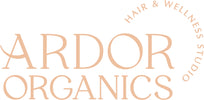When we first started our lowtox journey we were faced with a lot of confusion and debate. Our skin is the largest organ of our body, what are we absorbing? What don’t we absorb? Does any of it even matter? When we looked at the facts, this confusion was immediately laid to rest. Yes, we absorb product ingredients and yes, we need be concerned with the chemicals we apply to our bodies.
Chemical absorption into the body depends on many factors, such as the size and structure of a chemical – there are certain large chemicals our body can’t soak in but there are so many we do. Nano particles are used in products such as sunscreen and lotion to speed up the absorption rate into the skin. It can also depend on the area of your body, for example, the absorption rate on your forehead is four times greater than that of your forearms – yet it’s still going in.
There are three different ways we can absorb toxins into our bloodstreams. Understanding this gives us insight into how vulnerable we are.
Firstly, these chemicals can pass through our skin and into our cells. This can happen in three different ways: Intercellular, where they weave between skin cells and instead through fats, oils, and waxes – aka lipids. Transcellular, meaning cell-to-cell. Or through the least common pathway, the appendages, aka hair follicles and glands.

Secondly, we can absorb external toxins into our bodies through inhalation. Many chemicals, such as Ammonia – commonly used in salons, become airborne almost immediately. When we inhale these chemicals, vital organs such as our lungs are exposed to an array of potential issues.
Thirdly, internally. Anything that is on our hands can easily end up in our mouths. From running our fingers through our product laden hair, to the lipstick that ends up on our tongue. These sneaky toxins will then be transported directly to our digestive systems where they can seep into the blood stream.

We are exposed to harmful chemicals every day in many ways, especially in the myriad of products we own. They end up in our blood streams and vital organs, and carry a long list of potential hazards. To argue that we are not taking these toxins in, is to disregard human habit, and to claim our skin is a protective layer that allows nothing to penetrate its walls, is to disregard science itself.
To drive the message home that yes, we need to be concerned with the products our skin, are the studies on baby’s umbilical cords. 232 synthetic chemicals came up in samples from multiple babies from different parts of the US. This includes the recognisable BPA, which is a hormone disruptor.
This can all feel a little overwhelming but the first step to change is understanding there is a problem in the first place. Making just one small switch can make a difference in the long run. After all, an acorn grows into a mighty tree.

By Gemma Innes in collaboration with writer Sian Henderson
References
1. https://www.cdc.gov/niosh/topics/skin/default.html
2. https://www.scientificamerican.com/article/chemicals-umbilical-cord-blood/
1. https://www.cdc.gov/niosh/topics/skin/default.html
2. https://www.scientificamerican.com/article/chemicals-umbilical-cord-blood/





